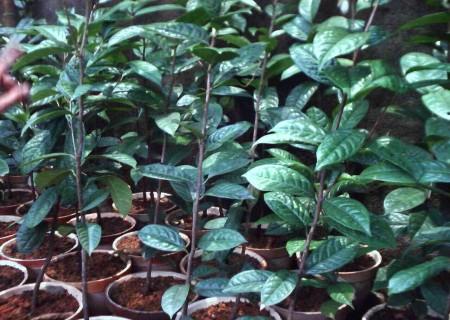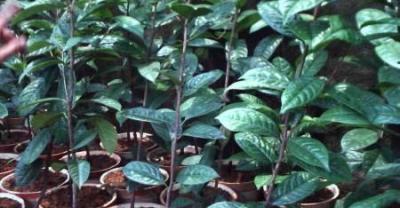Planting techniques and pot planting methods of camellia seedlings
Camellia is evergreen in four seasons, widely distributed and graceful, so it is one of the important plant landscaping materials in the south of China. The use of different natural tree shape of camellia, planted alone in the green environment, especially on the lawn green contrast; the use of camellia natural tree shape, high and low scattered, small groups, clumps into pieces, so as to highlight the landscape effect of camellia Camellia can also be used for viewing and viewing through artificial shaping, such as trimming and shaping the crown into spherical, umbrella-shaped, cylindrical crown, camellia tree type, flat floor type, so that camellia crawl on the ground to grow and lay the ground.
Camellia is the most suitable for garden greening, from the cultural connotation, it is a traditional Ruihua Jiamu, a kind of auspicious Camellia. In terms of shape, camellia is evergreen all the year round, with moderate tree shape, ground planting, potted plants and flower beds. On the other hand, the tree type of Yunnan camellia needs a larger courtyard space before it can be planted on the ground, so it is planted more in monasteries and academies. Dali Bai, every family running water, every household to grow flowers, must first plant camellias, but mainly by altar planting or potted plants.

1. Potted soil formula
Camellia can choose the cultivation soil of gentleman orchid, or you can use rotten leaf soil to mix coarse river sand evenly, so that the soil is well drained and breathable.
Those with red soil can be mixed with red soil: coconut bran: peat soil at 3:1:1, or red soil: rotten leaf soil: coarse sand at 6:3:1 such soil is soft, breathable and unhardened.
2. Flowerpot selection
Potted camellias prefer purple sand pots or tile pots, the size should be moderate, not too big or too small. For example, a camellia with a height of 40-50 cm and a crown width of 20-25 cm can be planted in a pot with a diameter of about 20 cm. Other sizes, and so on.
3. Potting time
The pot time of camellias is suitable in November in winter and from February to March in early spring. At this time, the buds are enlarged, the flowers are in full bloom, and the pot is the most suitable. If the flowers wither and the new roots are in the pot during the germination period, special attention should be paid to not injuring the roots. Generally stop potting before and after the sprouting period, because at this time the new shoots are waiting to be sent and the leaves are developed, which requires a lot of water, such as pots, new roots are injured, which can easily affect the growth and development of the year. High temperature and severe winter season also avoid pots, so as not to cause plant atrophy and death.
4. the method of potting.
After the camellia seedlings are in hand, first look at the formula of the original soil of the tea. if it is a sticky soil, soak it in water for half a minute, and then gently shake it to wash off some of the original soil. If it is light breathable soil, you only need to shake off some floating soil gently. First of all, the basin bottom pad on broken tiles, stones, etc., to facilitate water control, and then fill part of the coarse soil. Put the seedling in the basin, fill the root with fine soil, and then gently shake the basin to make the soil closely combine with the root system. Fill the soil to a height of 2 cm on the edge of the basin for watering. After planting, it should be watered with permeable water in time, also known as root water. The soil should be kept moist for the next month.
5. Watering method
Camellias like a moist and ventilated environment, so we must pay attention to that the pot soil should not be too dry or too wet. This is why soil compounding requires good water permeability. In general, more water can be watered in spring to meet the water demand of the sprouting pile. Summer watering should be carried out in the morning and evening and wet the leaves. Stagnant water should be prevented during the rainy season in the south. Watering in autumn is the same as in spring, but the amount of watering in winter should be controlled to keep the basin soil moist, and watering in winter should be carried out at noon.
6. Key points of fertilization
Camellias do not like big fertilizer, generally apply 2-3 times of phosphorus and potassium fertilizer before 10-11 months and 2-3 times of mixed organic fertilizer 4-5 months after flowering, such as cake fertilizer, barnyard manure and so on. Camellia bogey to apply a large number of nitrogen fertilizer, should be based on phosphorus and potassium fertilizer, too much nitrogen fertilizer will cause branches to grow, and reduce flowering. Fertilization should be properly controlled according to the strength of seedlings, more application of strong seedlings, little or no fertilization of weak seedlings. For the weak growth of seedlings can be used to change pots, instead of fertilization, can also achieve good results.
7. Pruning skills
The pruning of camellias is very important, generally cutting off the branches, diseased and weak branches that affect the shape of the tree. There is also the arrangement of buds, once the buds are too dense, but also to comb, flowers should be picked in time after withering, which can reduce the consumption of nutrients.
8. Turn the camellias into pots
Turning over the plate of camellias is something that many people will ignore, and many people will not turn the pot again when they are planted. In fact, this is very wrong. Camellias generally have to turn the pot once every two years and change a large basin. Only in this way can it be beneficial to its growth. Special attention should be paid to the time of turning the basin, preferably in April, step by step when turning the basin, do not get rid of all the old soil, but also add a small amount of base fertilizer to it, and then water it.
Maintenance management:
1. The bonsai of camellias should be protected from direct sunlight after each banding. Usually leave it in the shade for a few days.
2. The indoor storage time is generally no more than one month. It should be placed when the red or scattered petals are first seen in the buds, and move into the nursery when the number of flowers reaches 80% to 90%.
3. When planting, the basin soil should be covered with moss or grass to keep the soil moist. The most avoid basin soil naked and produce salt frost.
4. pay attention to the prevention and control of diseases and insect pests. The main diseases are black mold, anthrax and so on, which can be controlled by spraying 0.5 degree Bordeaux solution. The main pest is tea shoot moth, and the control method can cut off the insect tip, which is generally carried out from April to June.
5. Fertilization should be applied lightly after full ripening. Avoid thick fertilizer and quick-acting fertilizer to avoid rotting roots and scorched leaves.
6. Side branches, twigs and twigs can be shredded and removed after half a year, so as to prevent the branches from falling into brown filaments after growing and thickening, and then form broken branches and die. Trunk drawing can be carried out in a year's time.
7. Repair and plastic surgery are carried out every summer and winter, and the excess overgrown branches are cut off in order to ensure that the modeling effect of the whole plant is well preserved.
- Prev

How to plant tobacco with high yield technology? What kind of drugs are commonly used for tobacco diseases and insect pests and their control
Tobacco not only can be made into cigarettes, dry cigarettes, pipe cigarettes, cigars, etc., but also has a variety of medical uses. Although tobacco has brought a lot of harm to human beings, even.
- Next

Ecological habits and planting techniques of Radix scrophulariae
Ecological habits and planting techniques of Radix scrophulariae 1. The ecological habits of Radix scrophulariae (Latin name: Scrophularia ningpoensis Hemsl.)
Related
- Fuxing push coffee new agricultural production and marketing class: lack of small-scale processing plants
- Jujube rice field leisure farm deep ploughing Yilan for five years to create a space for organic food and play
- Nongyu Farm-A trial of organic papaya for brave women with advanced technology
- Four points for attention in the prevention and control of diseases and insect pests of edible fungi
- How to add nutrient solution to Edible Fungi
- Is there any good way to control edible fungus mites?
- Open Inoculation Technology of Edible Fungi
- Is there any clever way to use fertilizer for edible fungus in winter?
- What agents are used to kill the pathogens of edible fungi in the mushroom shed?
- Rapid drying of Edible Fungi

